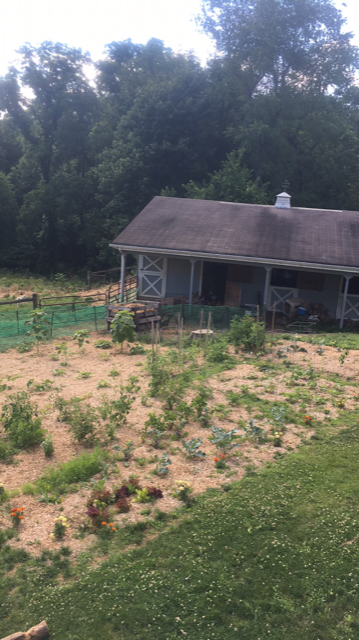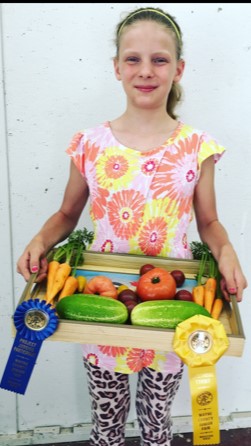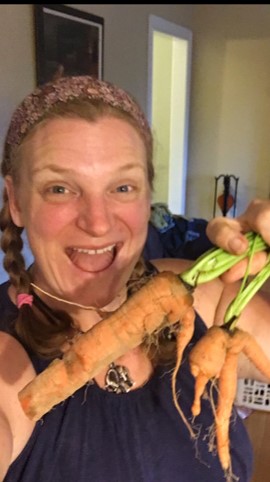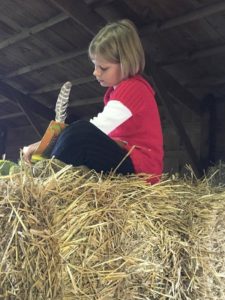Spring will be here before you know it! Have you ever heard someone say something like that? Sounds kind of silly when we are in the coldest snap of my memory and my breath is freezing on my hair and we’re taking five trips a day to the barn with water for the animals.
But inside, it’s warm and the seed catalogs have started to arrive! Even though we are several months away from putting plants and seeds in the ground, there is quite a bit I need to think about now. I’d like to give you FIVE tasks to do in the winter to have a rockin’ summer garden!
1. SPACE
Plan where your garden will go. Same place as last year? How did that work out in relationship to your water source, sunlight, access to the house? If it’s your first garden, I’d tentatively pick out three spots and start watching them. It’s too early to start measuring sunlight because the path of the sun changes so much from February to June, but you can watch to see what the sun will have to clear before it hits the garden. Based on what you’re planning, you need a certain number of direct sunlight hours. At my house, the garden is in the backyard, and I have to wait for the sun to clear the house, but the front yard is full of tall trees, so I wasn’t going to get much more sunlight there. Also consider drainage, and if you live in a neighborhood, potential HOA rules. I would love a garden right out my kitchen door because that would be so easy to snip some oregano or pull a few carrots, but with the orientation of my house, that’s not an ideal place for growth. Start a notebook. You think you’ll remember…but every year I kick myself for not taking better notes of my thoughts and results!
2. BUDGET
This is an unfortunate reality. While I’d love to just plant all the things, that’s just not possible. I like fun and exotic varieties, but those come with a price tag. Seeds are cheaper than started plants, but have a higher failure rate sometimes. You have to weigh your time and effort against the cost of buying started plants that have a more guaranteed rate of success. If you decide to order seeds, sometimes it’s fun to get together with some friends and split the packet and the cost. It’s fun to get together and start seed trays all together! Either way, it’s time to order seeds and plan for when and where you’re going to get your started plants!
3. GOALS
This goes hand in hand with numbers one and two. What’s your goal with your garden? Are you using it for learning and novelty? Education and family bonding? Feeling connected to your food? Or are you hoping to grow enough to preserve for winter or sell at a local stand or farmers market? Answers to these questions will impact both how much you plant and what varieties you plant. I wouldn’t recommend planting 10 tomato plants if all you want is some fresh salads in the summer. If you want to freeze or can your green beans, then you have to plant more and choose a variety that preserves well. Last year, we planted Dragon Tongue beans…which were super fun and the kids loved them, but they didn’t preserve well, so we had no beans to freeze for winter.
4. ROTATION/TIMELINE
This is where it gets really exciting. This is where you get to dream and plan a little more. Now that you have a budget, an idea of space, and the beginning of a list that you want to plant, you need to put pencil to paper and map out where you’re going to put species and a timeline of when things need to be planted. What’s a cold weather plant? When the peas are done, what can you plant in their place? What, like radishes, grow quickly and you can plant several rounds? Here’s where you map out companion plants. We like to plant marigolds and lemon balm around the perimeter of our garden to keep the bunnies at bay. I plant basil near my tomatoes and make sure that my potatoes and squash have plenty of room to grow. What can grow up and what am I going to put in place for them to climb?
5. REFLECTION from last year
If you’ve gardened in the past (and kept super good notes, right? ;) ), this is where you reflect on what you planted and where you planted it. I found someone who started all open air pollinated heirloom tomatoes. Of course I bought a ton and we had more tomatoes than we knew what to do with in our garden in no time. But we didn’t have any utilitarian varieties that were good for canning and saucing. So I was begging people to take tomatoes and didn’t have any to put up for the winter. My cucumbers started off strong, but then dwindled. Do I need to augment the soil there or find a new place to plant them? My tomato plant placement was great and I had a good number of basil plants amid them. I need more sand in the area where my carrots will go. They grew well, but were super hard to dig up when they were ready. I need less space between my lettuces, and need to plant way more rainbow chard. My kids loved it and I was admittedly surprised. I need to put the squash closer to the peas.






























